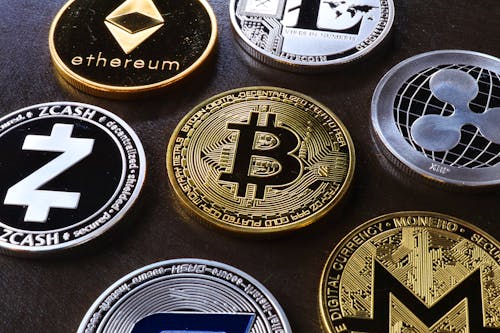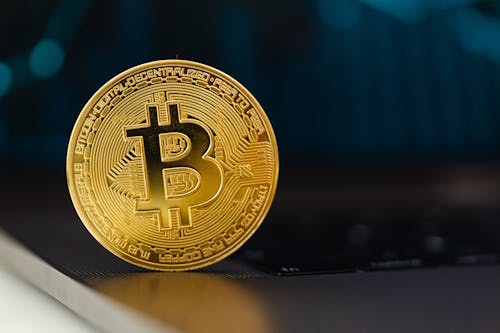Cryptocurrency
What is Bitcoin
How This Digital Currency Works
How To Make Money Using Bitcoin Without Big Investment
Fortunately, it's easier to define what Bitcoin actually is. It's software.
Don't be fooled by stock images of shiny coins emblazoned with modified Thai baht symbols.
Bitcoin is a purely digital phenomenon, a set of protocols and processes.
It also is the most successful of hundreds of attempts to create virtual money
through the use of cryptography, the science of making and breaking codes.
Bitcoin has inspired hundreds of imitators, but it remains the largest cryptocurrency by market capitalization,
a distinction it has held throughout its decade-plus history.
(A general note: according to the Bitcoin Foundation, the word "Bitcoin" is capitalized when
it refers to the cryptocurrency as an entity, and it is given as "bitcoin" when it refers to a
quantity of the currency or the units themselves.
Bitcoin is also abbreviated as "BTC." Throughout this article, we will alternate between these usages.)
Bitcoin is a digital currency, a decentralized system which records transactions in a distributed ledger called a blockchain.
Bitcoin miners run complex computer rigs to solve complicated puzzles in an effort to confirm groups of transactions called blocks;
upon success, these blocks are added to the blockchain record and the miners are rewarded with a small number of bitcoins.
Other participants in the Bitcoin market can buy or sell tokens through cryptocurrency exchanges or peer-to-peer.
The Bitcoin ledger is protected against fraud via a trustless system; Bitcoin exchanges also work to defend
themselves against potential theft, but high-profile thefts have occurred.
Bitcoin is a network that runs on a protocol known as the blockchain. A 2008 paper by a person or people calling themselves Satoshi
Nakamoto first described both the blockchain and Bitcoin and for a while the two terms were all but synonymous.
The blockchain has since evolved into a separate concept, and thousands of blockchains have been created
using similar cryptographic techniques. This history can make the nomenclature confusing.
Blockchain sometimes refers to the original, Bitcoin blockchain. At other times it refers
to blockchain technology in general, or to any other specific blockchain, such as the one that powers Ethereum.
The basics of blockchain technology are mercifully straightforward. Any given blockchain consists of a
single chain of discrete blocks of information, arranged chronologically. In principle this information can be
any string of 1s and 0s, meaning it could include emails, contracts, land titles, marriage certificates, or bond trades.
In theory, any type of contract between two parties can be established on a blockchain as
long as both parties agree on the contract.
This takes away any need for a third party to be involved in any contract.
This opens a world of possibilities including peer-to-peer financial products,
like loans or decentralized savings and checking accounts, where banks or any intermediary is irrelevant.
While Bitcoin's current goal is a store of value as well as a payment system, there is nothing to say that
Bitcoin could not be used in such a way in the future, though consensus would
need to be reached to add these systems to Bitcoin. The main goal of the Ethereum project is to
have a platform where these "smart contracts" can occur, therefore creating a whole
realm of decentralized financial products without any middlemen and the fees and potential data breaches that come along with them.
This versatility has caught the eye of governments and private corporations;
indeed, some analysts believe that blockchain technology will ultimately be the most impactful aspect of the cryptocurrency craze.
In Bitcoin's case, though, the information on the blockchain is mostly transactions.
Bitcoin is really just a list. Person A sent X bitcoin to person B,
who sent Y bitcoin to person C, etc. By tallying these transactions up,
everyone knows where individual users stand. It's important to note that these
transactions do not necessarily need to be done from human to human.

The process that maintains this trustless public ledger is known as mining.
Undergirding the network of Bitcoin users who trade the cryptocurrency among themselves is a network of miners,
who record these transactions on the blockchain.
Recording a string of transactions is trivial for a modern computer,
but mining is difficult because Bitcoin's software makes the process artificially time-consuming.
Without the added difficulty, people could spoof transactions to enrich themselves or bankrupt other people.
They could log a fraudulent transaction in the blockchain and pile so many trivial transactions
on top of it that untangling the fraud would become impossible.
By the same token, it would be easy to insert fraudulent transactions into past blocks.
The network would become a sprawling, spammy mess of competing ledgers, and bitcoin would be worthless.
Combining "proof of work" with other cryptographic techniques was Satoshi's breakthrough.
Bitcoin's software adjusts the difficulty miners face in order to limit the network to one
new 1-megabyte block of transactions every 10 minutes. That way the volume of transactions is digestible.
The network has time to vet the new block and the ledger that precedes it,
and everyone can reach a consensus about the status quo. Miners do not work to verify transactions
by adding blocks to the distributed ledger purely out of a desire to see the Bitcoin network run smoothly;
they are compensated for their work as well. We'll take a closer look at mining compensation below.

No comments:
Post a Comment
Please Comments for me